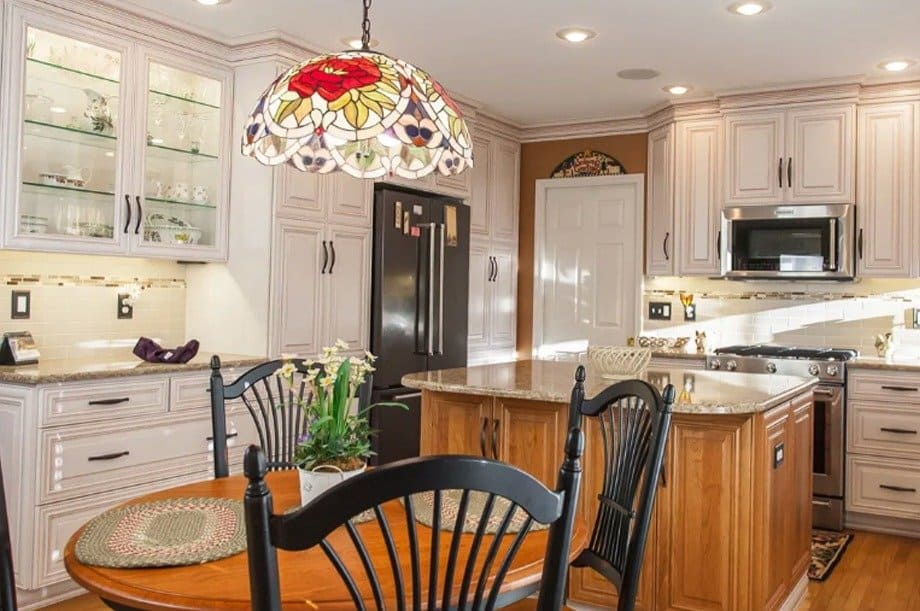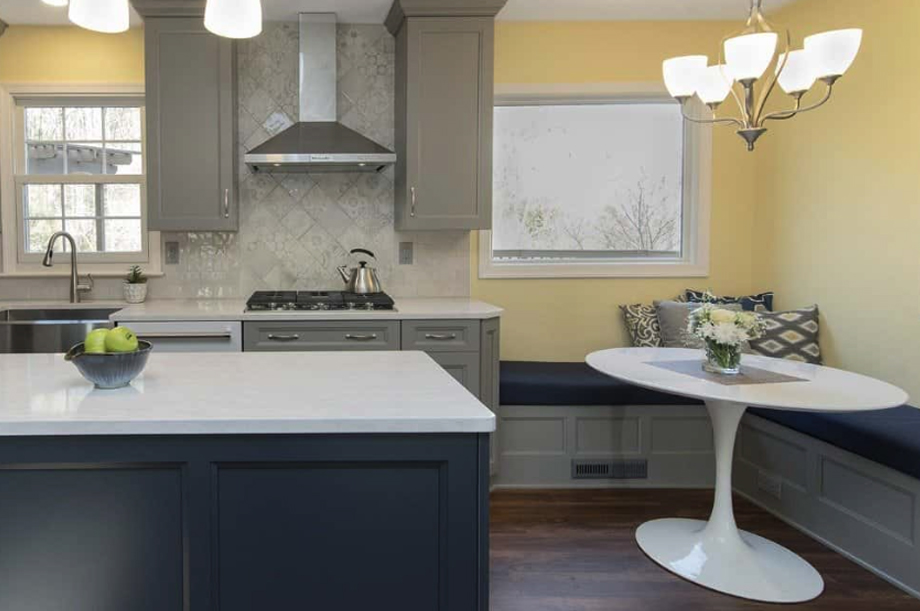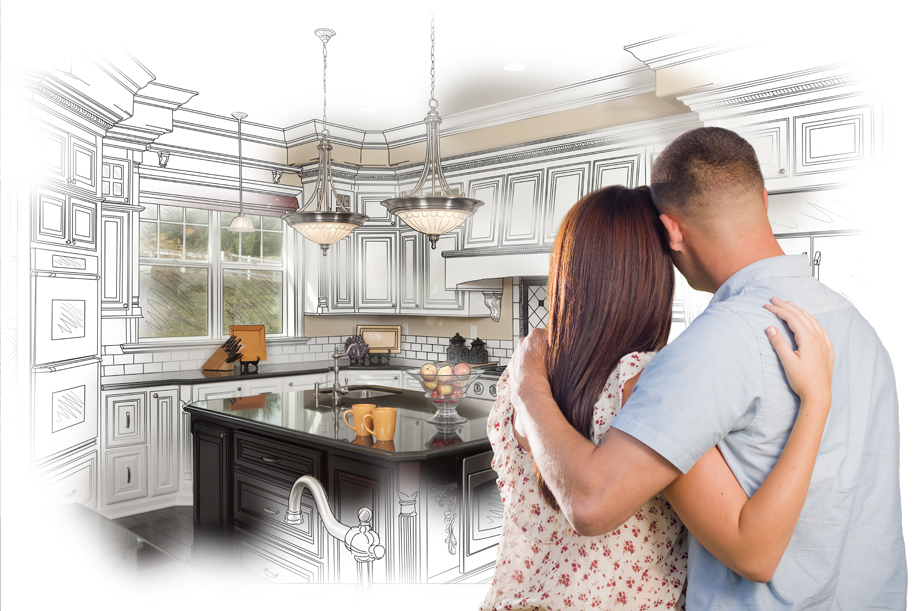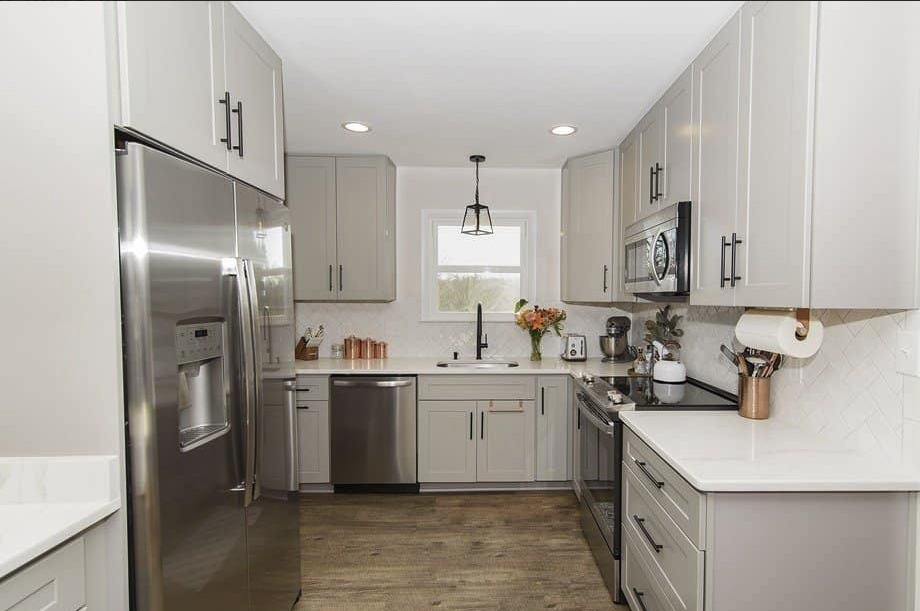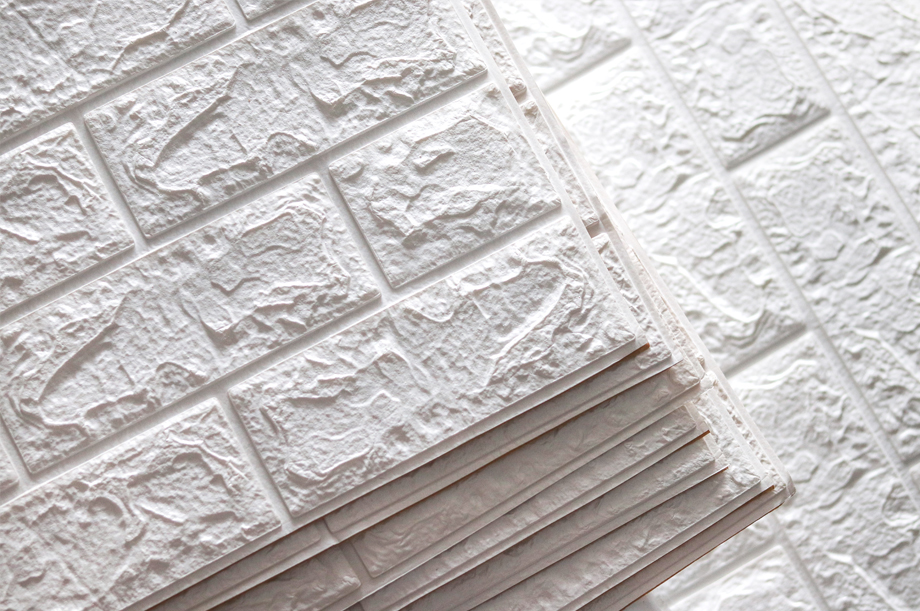There are many options when it comes to transitional kitchen designs. When done correctly, these kitchens feel updated and timeless. They can shift with changing design trends while remaining unique, classy and beautiful. Here are some design tips for transitional kitchens, courtesy of O’Hanlon Kitchens.
What Is a Transitional Kitchen Design?
Transitional designs bridge the gap between traditional and contemporary. This is the broadest category of interior design because it covers a wide spectrum. Some homeowners like mostly traditional designs with a few contemporary accents. Others like a modern home with a nod to traditional design. No matter where you are on the spectrum, you can achieve the beautiful kitchen of your dreams.
Mix Tones, Textures and Patterns
Transitional kitchens tend to have a mixture of tones, textures and patterns. Monochromatic kitchens may feel too contemporary, and heavily themed kitchens don’t feel organic enough for the transitional design. Play around with different tiles, countertops, cabinet finishes and hardware styles. You might opt for two-tone cabinets, with dark base cabinets and light upper cabinets. If your kitchen design feels a little “flat,” it’s probably time to add a different hue or texture to the space.
Maintain a Neutral Base for the Kitchen Design
The term “transitional” has dual meaning. It indicates a kitchen design that shifts between styles, but it also reflects the versatility of the design style. When done correctly, a transitional kitchen design can transition with new trends.
In order to achieve that, you need a neutral base. You can add color with wall paint, art, towels, rugs and more, but the base of the kitchen should be neutral. Shades of brown, white, grey, tan and black are ideal for this design style. These colors will act as a reliable foundation, no matter how your style changes.
Don’t Be Afraid to Be Unique
Because transitional design is on a spectrum, you have the opportunity to do just about anything you want. This includes creating a special focal point in the kitchen that makes it stand out from the rest. Perhaps you could do a custom range hood above the stove or use a bold color on the kitchen island. As long as the rest of the kitchen is neutral, you’ll still be able to transition in the future.
Avoid Ornate Details
Ornate trim and molding can become dated quickly. If you have a simplified design, it will be easier to shift to changing styles. Instead of having crown molding with five curves along the façade, choose something with one or two curves. This will still look decorative and play into the traditional side of the design, but it won’t be so traditional that it feels out of place.
Look at Your Sample Materials Altogether to Ensure Cohesion
No matter what your kitchen design style is, it needs to look cohesive. As you’re planning your cabinet colors, countertops, backsplash and other features, look at how the material samples flow together. If you notice too many busy patterns in the samples, you can simplify one of them. If something feels out of place in the grouping, you can change it out for a better option. This helps you see the balance before the materials are fully installed.
More specifically, view the samples in your kitchen so you can see how they appear in that lighting. The lighting within the space may pick up different undertones in the materials, which can change how they coordinate with one another.
The professional designers at O’Hanlon Kitchens can help you create a cohesive, long-lasting transitional kitchen design. Reach out to 443-285-0558 to schedule your in-person consultation. We offer complete kitchen remodeling, as well as direct replacement for cabinets and countertops.


